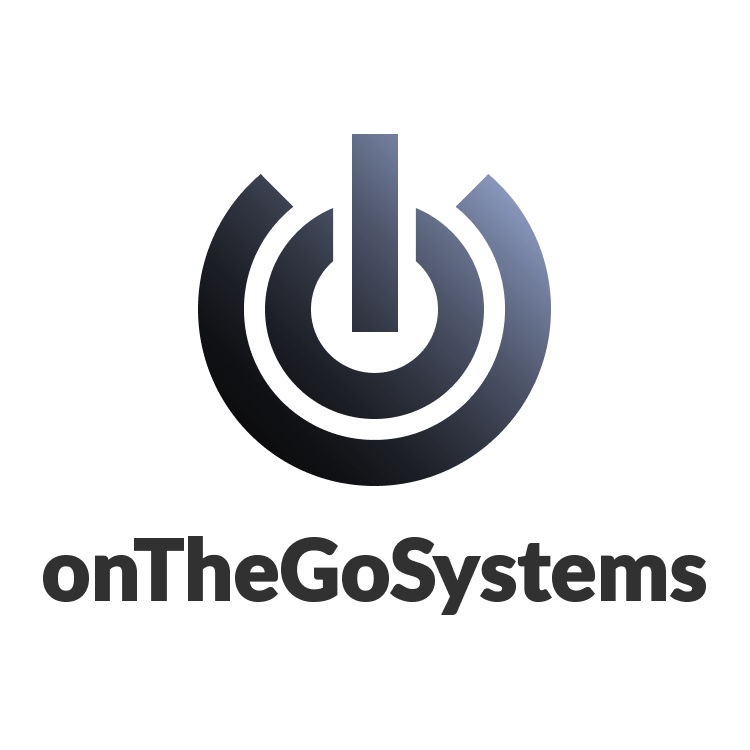What challenges have you encountered building a remote team?
- Empathy occurs much less naturally, even with lots of video chat and long phone conversations. This is a double edged sword; decisions are less charged by emotion, but it can also be easier to become unreasonably angry and frustrated at someone who you don’t grab a meal with very often, and you can become a bit too distant.
- It’s difficult to spend truly undistracted, focused time with anyone. In fact, I’ve taken to doing most of my one on one meetings on the phone, while going for a walk (and encouraging the other party to do the same), because it can be hard to focus on a conversation when you see email notifications, chat notifications, “all the things” blinking on your desktop – and seeing your own video on the screen doesn’t help, either. You know how it’s annoying when someone “subtly” takes out their phone and starts checking email during a meeting? Take that and multiply by 5 – heck, sometimes you can hear the other party typing, or seeing their eyes reading an email.
- Employees can often feel like they’re working siloes, even when they’re collaborating with 5-10 other employees. You have to make an effort to get the kind of “organic visibility” into company activities that occur when you eat lunch with random colleagues, or meet them at the watercooler.
- Retention can be trickier, since changing jobs does little to disrupt personal routines. You’re not losing your “after work beer crew”, you’re not changing your commute… if you stay remote, you’re not even changing your physical office.
- For some, healthy separation between personal home life and work life can blur; it risks faster burn out and lowered retention.
Aha! is growing more rapidly than any other company that I have founded or worked for. Chris and I founded Aha! because we believed so deeply in its need to exist — and we have been humbled by its growth and success. From the very start, it has been obvious that product and marketing managers share the same pain that we experienced when trying to build and market great products.
That growth is terrific — but it also presents challenges. The biggest challenge with rapid growth is ensuring that new team members internalize the purpose of the company and feel connected to its past and future. We also want them to build meaningful connections with their colleagues. This is why we get the entire team together twice a year.
Hiring is hard. All the job boards from Monster to LinkedIn did not conceive of remote work, making it impossible to advertise job openings efficiently in small towns or faraway places where we want to be hiring. New options are now available to us.
Cultures and compensation can be different for different locations. This makes it hard to be “open book.”
At first, we there was a definite shift we needed to make to ensure that our virtual employees were always part of our thinking as we discussed service center initiatives. With time, it now comes more naturally. When we have company executives visit the service center, we even schedule a virtual stop where they can drop in and meet some of our home-based team members via video.
Identifying the right fit for the position has been the main challenge. You want someone who is passionate about customer service and is accustomed to call center work. At the same time you need a person who will succeed doing this work from home. Another challenge has been making sure those candidates have all of the required equipment to work from home. We have also experienced challenges with attendance. Believe it or not, we have experienced poor attendance in some employees when they begin working at home. They suddenly begin missing time due to distractions in their own environment.
- Finding the right talent – people that flourish in remote environments.
- Communicating goals and objectives and ensuring those flow through the organization.
- Coordinating complex projects across multiple functions or teams.
If this is the first time someone has worked remotely, they may not anticipate that they may have feelings of isolation. We pair people with a mentor in a similar time zone when they first join, so they have a designated person to chat with if they have questions about how we operate, or if they just want to chat. We provide a USD 250/month co-working allowance if Automatticians would like to work with others on a regular basis.
The hardest part of managing a remote workforce is creating and maintaining a dynamic culture. You must be intentional about setting expectations and over communicating. Your team will follow your leaders. So, make sure your leaders are transparent and available. Be willing to work together through multiple communication platforms like instant messaging and video conferencing. Accessibility builds trust and cohesion.
Onboarding – It can be challenging to onboard new hires who have never worked remotely before. Day one looks quite different being remote vs. being in person. We’ve learned that the ideal time to onboard a new hire is right before a company-wide event so they can meet the entire team in person in the first month or two. We constantly get feedback that the company events are the clincher to making someone new instantly feel like part of the team!
Turning Work Off – While remote work offers flexibility, that flexibility also has a downside. With the ability to work anywhere, it can be hard to turn work off some days. This can lead to inefficiencies and burnout in severe cases. Setting boundaries for yourself and being respectful of other’s time during their “off hours” helps with this challenge.
Feeling Isolated – In the words of one Bitovian, Lela Kodai, “Just because you work physically alone, doesn’t mean you have to be lonely.” It’s critical to be pro-active about setting aside time to connect with others, whether that includes making social plans in the evenings, setting aside time for casual Slack chats with coworkers, or grabbing lunch with someone. Setting aside time to interact with others and being conscious about your individual needs are important aspects of remote work.
Getting everyone on the same page! Since we don’t “see” each other on a consistent basis every day, we have to constantly be thinking about what to communicate to the team, and ensuring that everyone still feels part of our company, and understands and are reminded of our values. I wish there was more of a way to “mingle” just for the sake of it!
The challenges in terms of managing a remote team relate to communication. So long as you can find ways to keep communication channels open, both between individuals and as a team, these can be mitigated.
Being remote, it’s top of mind for us to make sure that employees feel connected to one another. Data from our 2018 State of Remote Work shows us that 1 in 5 remote workers are lonely—we really work to avoid that feeling as much as possible by creating opportunities for our team to talk with one another and reach out.
Another challenge is definitely time zones. We have people all around the world. The biggest challenge is that many of our team members are based in North America, several in Europe, and fewer in Asia. This means that sometimes meetings and synchronous things happen in times that are better suited for North America and Europe and less so for Asia. We’re working to make this more fair and change up the times when we have meetings, or focus on asynchronous communication.
Not being able to fully rely on people holding themselves responsible for their work goals and deadlines. Micro-management is always a pending threat with new hires.
There were several challenges we encountered that led us to make accommodations early on in the development of the program:
- Overall adoption of the practice and any barriers to entry, for example, how widespread will adoption be, who will be early adopters, which employee groups will be unable to participate and/or won’t want to, etc.
- Leadership perceptions and recognizing a remote employee can be just as productive (if not more so) as an office employee
- Providing leadership with training and tools to ensure success within their teams
- Ensuring seamless technology access across any geography/country
Interviewing and hiring new team members is one of the main challenges. Occasionally people are determined and send a solid portfolio during the hiring process, but fail to prove these during the trial. We’ve had numerous cases where we set expectations for the trial period and get a green light on these, and people quit a few days or a couple weeks later since they no longer agree with certain things that were made clear during the hiring process.
Another challenge is hiring less senior staff remotely. When people are expected to learn a new technical stack, a technology, a programming language or just jump to the next level, it may be fairly challenging for some of them to do that themselves without someone coaching them during every step of the process. Identifying delays and troubles grasping a new tool may take a while and send the wrong signals to our team such as slacking, or not communicating properly, delivering poor quality and others, instead of signalizing and working together with senior folks on said challenges.
For Doist, it has been a very natural, organic process. We have always been remote-first, so it is integrated into our company’s DNA. Nevertheless, as we grow (we’re now approximately 50 people in 20 different countries), it has become more difficult to follow what is going on and who has ownership of what. We are hopeful that our DO system will help solve these challenges.
As the Melbourne office grew initially it was ensuring we had a culture that supports people working remotely. We didn’t want people to feel as though they had to come in to the office if there was a big meeting on, or for people to not attend meetings if they were working outside the office.
Now, regardless of where you’re working, it is a normal day where you can dial in or access anything you need.
One challenge was developing a project management system to provide clients with information about work that their virtual assistant performed. We ended up developing our own system from scratch. Another challenge was that, when we were just starting up, we had to establish trust amongst potential hires even though we didn’t have a track record.
Certainly, communication is vital. When you’re in the same office together, you have more natural, unplanned meetings and from those come some of the best ideas, solutions, healing, and updates. So, in a remote company, I do believe you have to work, perhaps, harder at having amazing relationships and growing everyone professionally. In an office, you must be intentional. I think in a remote ecosystem, you have to be much more intentional.
This is true for any hire, but particularly true for remote hires: hiring the right person is critical to success. We have added many steps to the hiring process to make sure the person is the right fit for the role in mind and our company culture.
Personality conflicts are particularly difficult to resolve remotely. We’ve found that when a team is having a hard time seeing eye to eye, the only real way to move things forward is to get everyone in a room together.
One thing we’ve seen is that you have to invest a lot of time and energy into hiring well. Growth is hard, but it’s much easier to navigate change if you know you can trust the people you’re hiring. Without that trust as a foundation, everything else related to building a good company (let alone a distributed one) becomes infinitely more difficult.
One of the more challenging parts of building Goodway Group’s remote workforce is maintaining company culture as we continue to grow. This is often something that traditional companies struggle with as well. We’ve grown by nearly 50 percent in the past year. Building such a large remote workforce in such a short period of time is never an easy process and does require tweaking and adjustments. Employees need the chance to form personal bonds in order to really thrive working as a team, and working remotely does limit the amount of casual interactions that help to form those critical personal bonds.
I prefer to think of them as trade offs rather than challenges. Office cultures have plenty of challenges as well and it’s important to remain mindful of that. No way of working together is free of challenges.
No matter what kind of culture you have, the biggest challenges are always around people and process. Early on it was difficult to identify the right culture fit for our company, so we made several mistakes. Most notably, we learned that you have to hire people that are already quite skilled and experienced at their craft. Remote work is typically more autonomous, so in order to be productive you have to have done this stuff before.
We’ve had some bad experiences with remote workers. There are freelancers who try to work on other projects while billing time to Hubstaff, and we worked with a developer who was actually using another team to complete a task assigned to him. Once someone becomes part of our team they’ve earned our trust, but when someone is just starting out you have to watch them a little more closely.
We published a free ebook on how we manage to overcome these challenges; ”No Excuses” Definitive Guide to Building a Remote Team.
As we began remotely and scaled to over 600 employees, we have grown with the business. As technology has evolved, we have also moved forward – further adapting options such as Google Apps and Asana, as two examples.
You have to be very deliberate about how you communicate. You have to communicate more and clearer. That takes some getting used to, but in the end I think is a benefit for everyone because we learn how to be better communicators — and that’s helpful in so many more settings than just remote work.
Planning around time zones may be our biggest challenge. For example, when two people are working on the same project, one in Australia and the other in the US, it can be much slower to reply to emails, as they’ll probably each just get one reply in per day. If both were in the same timezone, they could share several back and forth within the same day. Scheduling hangouts for voice chats can be even more of a challenge. It requires flexibility by all to sometimes have chats at odd hours late in the evening or early in the morning.
Finding the right people, who can manage themselves, be focused at work and able to work on their own.
Identifying which staff are doing a great job and which are not.
It can sometimes be difficult to accommodate for varying time zones and work schedules within the company. Lots of our employees work as they travel, so there can be hours of separation between us. But when we plan and communicate appropriately, we can mitigate these issues.
Some people are really happier in an office setting. There are now shared offices and places like the HUB for this kind of person to be in a more social setting when working.
Dealing with adverse situations like COVID or a software outage can be difficult in a remote company because it’s harder to feel that close camaraderie when we are not in the same room. Fire fighting, so to speak, takes more than just communication of the problem to the right people. It takes motivating them and supporting them through trying times.
The main challenges are time zones and cultures. You need to make sure projects run smoothly and that nobody is stuck waiting for someone’s reply in order to do their part. Different cultures can interpret a comment, a tone of voice, or even a joke in a different way than the intended one. Luckily in our organisation we all have a good relationship with one another, so things are not misinterpreted.
Sometimes I take things for granted, that everyone is working happily along. That’s why weekly check-ins are useful so that things are NOT taken for granted and any issues can be communicated and addressed.
The biggest challenge of a remote team has been building team camaraderie. When we have a company-wide success, like closing a big sale or hitting a quarterly goal, we naturally want to celebrate it. Making sure our remote employees are a part of this celebration is so important, especially because all of our product team works remotely, so they serve an integral role in every one of our successes. We try to work around this with our retreats, which give us a chance to celebrate and get some work done, as well. Last week, we had a big win on the marketing team and decided to go to the spa to celebrate, so we sent a gift certificate to our remote marketing team members and joked about having her join a Google Hangout while she got her nails done. The team culture is still there, despite the difficulty, we just have the opportunity to work even harder at building it and nourishing it.
Working remotely isn’t for everyone. It is well documented that it can be lonely for people who rely on work for most of their in-person social interaction. We’ve also found that hiring recent grads can be challenging if they are looking for the “campus environment” that a Google or Facebook provides. It’s important for both the employee and the company to make sure that the employee’s social life is a good fit so they are happy on your distributed team.
The biggest challenge we’ve found is when we encounter verticals that aren’t able to handle an “officeless” company. One of our team members worked for us right out of college on a student work visa and we attempted to sponsor him for a visa once that expired. We were told that it would be nearly impossible for us to succeed with this because we didn’t have an actual office.
We also don’t have a company “mail room” per se, either. This isn’t a huge problem, but when someone gets mail, we have to scan it or forward it over to them, which can be time consuming, especially when it’s a bulky gift.
On a more philosophical level, when you are distributed and when you have a group of a certain size, you end up with an environment where something I call “Accidental Evil” can thrive more readily than it could in a more traditional office setting (but it happens there too). I’ve written and spoken about this at length, but it’s up to the leaders of the organization to put in place measures to fight against it. It’s not easy, but it’s ultimately very rewarding.
We have to incorporate process and procedures much earlier based on the number of team members. With five people in an office, it’s easy to know what people are working on and the state of progress on projects. With five remote people, all the organic communication is lost, so you need better practices to keep everyone on the same page.
One can only talk so much good about remote work. There are drawbacks as well. Number one is the culture. Culture is always there, but in a remote company, it simply is a lot harder to create a strong culture. On the other hand, remote companies seem to be aware of this and actually do a lot to ensure they build some sort of a culture. I personally also have the belief though that work doesn’t have to be everything in life, and that motivations for having a job are different. Some have a job to earn some money for their families or for the time they’re not working, whereas others are career people. We shouldn’t try to make the workplace everything, I think.
Finding and vetting qualified editors from around the world to meet the volume demand during busy periods has been one of our main challenges. Because of this, we have focused on optimizing and streamlining each stage of the hiring process to ensure that we are finding the best editors in an expedient manner. We want to know, as quickly as possible, who our applicants are and whether they can meet our high quality standards.
Developing a high level of trust and collaboration with people who are half-around the world. It’s a challenge, but it’s possible, and as the various digital tools improve so does our ability to collaborate.
Running into people who don’t have the self-discipline, work ethic, and passion to meet our expectations is one of the greatest challenges however I don’t think this issue is specific to remote work. Though these people are probably better managed in an office environment, they’re often just a drag on productivity and team morale wherever they turn up.
One of the biggest challenges of running a remote company for me personally has been to remember to have a life outside of work. I often get asked the question, “How do you make sure your employees are working eight hours each day?” It’s counterintuitive, but I find that the opposite is true. I really have to emphasize the importance of setting boundaries with my team, so they don’t burn out. Get outside. Meet a friend for lunch. Take that yoga class.
I try to set that example, although I am the worst at it. Those who can’t teach, right?
The only real challenge is to convince people that they can work well from home. This problem has two factors – firstly people are used to working in an office and are afraid of the lack of human contact. Secondly, especially when they have little kids, they are afraid that they won’t be able to force themselves to work when there’s so many temptations/disturbances around.
So they want more people on one hand, and no people on the other… once they get that, they’re sold 😉
Time zones are hard. I always say it’s the one problem you can’t solve when working remotely. The best you can do is be understanding of different people’s schedules and try to find times that work, and have as few meetings as possible.
At first we tried to have a casual meeting structure. This was extremely stressful and kept different team members in the dark about what others were working on. Since then we’ve implemented Trello and a consistent standup/meeting structure to avoid this.
Onboarding new employees and making them feel like they are part of the team is a bit of a challenge. In an office setting you can take people to lunch, or drinks afterwards and really bring people into your culture. In the online remote environment, this type of bond takes A LOT longer.
There really haven’t been many challenges to be honest. We’ve loved the entire experience. There are so many perks to remote working that it hasn’t been much of a problem. There are some little details like taxes and payroll for people in different states but a good payroll company and accountant can help handle those items.
(1) It is important to develop easy and effective ways to keep people connected.
(2) If you work in a 100% virtual workplace, you also have to come up with an effective way to address problems that might surface with an employee at work. Instead of meeting with that employee face-to-face, you need to develop other thoughtful and supportive ways to communicate the problem and develop a solution.
(3) Over time we have learned that some people are just not a good match for working in a 100% virtual work environment. They feel too isolated. For example, people who are just starting their careers may feel like meeting other people at work is an important part of what they value about work, therefore working 100% remotely is not a good option.
Communication across time zones means things can take longer than you would like. For instance, if I send an email on Monday at 3 p.m. to someone in the Philippines, then chances are I won’t hear back from them until Tuesday morning. Even if I reply as soon as I see it, I am not guaranteed to get a response until the following day. So a simple conversation can take two days or more.
Isolation is the main one. We are human beings and making sure we spend time together in the flesh is crucial. We’ve made that easier by being semi-centralised in a few cities.
Being your own tech support is a pain in the proverbial. Even for nerdy crew members like myself, having a tech issue with your home office equipment is annoying. We’ve made good relationships with the “dial a tech” services in our areas.
Getting the word out that teaching online is even a thing.
We find a lot of our teachers are either confused about the whole concept or suspicious whether it’s a real thing. Our teachers earn an average of $19/hour working from home on their own schedule. That just sounds too good to be true. We struggle to get the message out that “Yes, this is real and we are a real company!”
The main challenge is finding the right fit, since as I mentioned before, it is not for everyone. Remote working can be very isolating, so finding people that don’t have to have the social element that work provides is important. I credit the HR department for truly understanding the types of people that thrive in remote work environments, as we have had some very successful hires (and some, not so much!).
Finding people who are the best in the world at what they do can be challenging. So far we’ve managed to assemble an amazing team but it has taken work. The people we look for need to be great at what they do but they also need to be very good at written communication. When most of your communication is done via Slack and similar tools, you need to be able to express your ideas and feedback to team members effectively in writing.
Probably the biggest challenge was hiring extraordinary people…but who had no remote experience yet. This requires you to invest a lot of time, mentoring and training in how to properly work remotely.
For example, someone might come in with no remote experience and try to schedule 7 meetings/week with people in 4 different timezones. Within a week, we have to quickly explain to them that not only is trying to schedule meetings with people in more than 2 timezones a no-no to our flexibility preferences, but that meetings in general are a bad idea unless absolutely necessary.
It’s up to you to decide whether you want to hire people without remote experience, but for us, the time investment of training them is worthwhile compared to hiring people who aren’t extraordinary but do have remote experience. Just remember to have patience and allow people without experience the opportunity to fail and pick themselves back up a few times.







































































